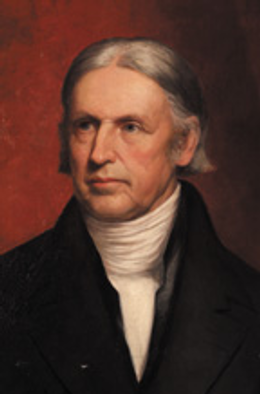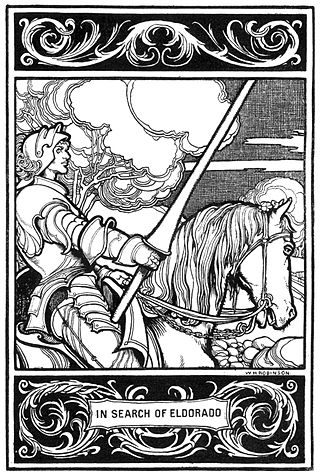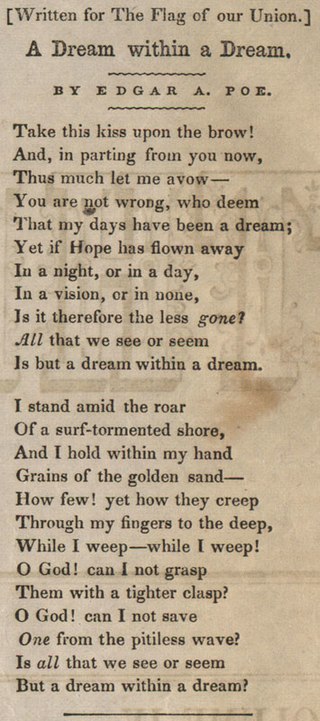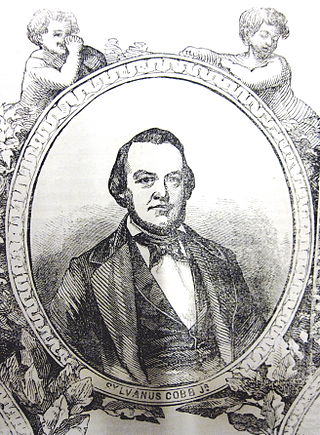
Edgar Allan Poe was an American writer, poet, author, editor, and literary critic who is best known for his poetry and short stories, particularly his tales of mystery and the macabre. He is widely regarded as a central figure of Romanticism and Gothic fiction in the United States, and of American literature. Poe was one of the country's earliest practitioners of the short story, and is considered the inventor of the detective fiction genre, as well as a significant contributor to the emerging genre of science fiction. He is the first well-known American writer to earn a living through writing alone, resulting in a financially difficult life and career.

Louisa May Alcott was an American novelist, short story writer, and poet best known for writing the novel Little Women (1868) and its sequels Little Men (1871) and Jo's Boys (1886). Raised in New England by her transcendentalist parents, Abigail May and Amos Bronson Alcott, she grew up among many well-known intellectuals of the day, including Margaret Fuller, Ralph Waldo Emerson, Nathaniel Hawthorne, Henry David Thoreau, and Henry Wadsworth Longfellow.

Hosea Ballou D.D. was an American Universalist clergyman and theological writer.

Nathaniel Parker Willis, also known as N. P. Willis, was an American author, poet and editor who worked with several notable American writers including Edgar Allan Poe and Henry Wadsworth Longfellow. He became the highest-paid magazine writer of his day. His brother was the composer Richard Storrs Willis and his sister Sara wrote under the name Fanny Fern. Harriet Jacobs wrote her autobiography while being employed as his children's nurse.

"Eldorado" is a poem written by Edgar Allan Poe, first published in April 1849.

"A Dream Within a Dream" is a poem written by American poet Edgar Allan Poe, first published in 1849. The poem has 24 lines, divided into two stanzas.

"Hop-Frog" is a short story by American writer Edgar Allan Poe, first published in 1849. The title character, a person with dwarfism taken from his homeland, becomes the jester of a king particularly fond of practical jokes. Taking revenge on the king and his cabinet for the king's striking of his friend and fellow dwarf Trippetta, he dresses the king and his cabinet as orangutans for a masquerade. In front of the king's guests, Hop-Frog murders them all by setting their costumes on fire before escaping with Trippetta.

Thomas Dunn English was an American Democratic Party politician from New Jersey who represented the state's 6th congressional district in the House of Representatives from 1891 to 1895. He was also a published author and songwriter, who had a bitter feud with Edgar Allan Poe. Along with Waitman T. Barbe and Danske Dandridge, English was considered a major West Virginia poet of the mid 19th century.

Maturin Murray Ballou was a writer and publisher in 19th-century Boston, Massachusetts. He co-founded Gleason's Pictorial, was the first editor of the Boston Daily Globe, and wrote numerous travel books and works of popular fiction.

Frederick Gleason was a publisher in Boston, Massachusetts, in the mid-nineteenth century. He is best known for establishing the popular illustrated weekly Gleason's Pictorial, at the time an innovation in American publishing. He has been called "the father of illustrated journalism."

The Boston Museum (1841–1903), also called the Boston Museum and Gallery of Fine Arts, was a theatre, wax museum, natural history museum, zoo, and art museum in 19th-century Boston, Massachusetts. Moses Kimball established the enterprise in 1841.

Sylvanus Cobb Jr. was an American popular fiction writer during the mid-19th century. His work was published in the New York Ledger, The Flag of Our Union, The Weekly Novelette, Gleason's Pictorial Drawing-Room Companion, and elsewhere.

The Melodeon was a concert hall and performance space in 19th-century Boston, Massachusetts, located on Washington Street, near West Street. Musical concerts, lectures, sermons, conferences, visual displays, and popular entertainments occurred there.

Jane Goodwin Austin was an American writer, notable for her popular stories of the time. During her lifetime, she was the author of 24 books and numerous short stories. Her friends throughout her life were some of the most well-known American authors, including Ralph Waldo Emerson, Nathaniel Hawthorne, and Louisa May Alcott.

William Croome (1790–1860) was an American illustrator and wood engraver in the 19th century. He trained with Abel Bowen in Boston, Massachusetts. Croome's work appeared in the American Magazine of Useful and Entertaining Knowledge (1830s), Lady's Annual (1830s), Crockett Almanac (ca.1840s), and in numerous children's books.

The National Theatre (1836-1863) was a theatre in the West End of Boston, Massachusetts, in the mid-19th century. William Pelby established the enterprise in 1836, and presented productions of "original pieces, and the efforts of a well selected stock company, which, with few exceptions, have been American. The scenery is of the highest order, and the business of the stage well directed. Mr C.A. Eaton made his debut at this theatre, and here Mr. F.S. Hill's early labors were eminently successful. Mr. J.S. Jones has written and produced on this stage thirty pieces, embracing every department except tragedy." William Washburn designed the building, erected on the site of the former Warren Theatre. Performers at the National included Edwin Adams, Marietta Zanfretta, Jean Margaret Davenport, Julia Dean, Jonathan Harrington, W.H. Smith, Mary Ann Vincent, and Billy Whitlock. In 1852 the theatre burnt down, and was rebuilt. In 1863 the building was again destroyed by fire.

The Odeon of Boston, Massachusetts, was a lecture and concert hall on Federal Street in the building also known as the Boston Theatre. The 1,300-seat auditorium measured "50 feet square" with "red moreen"-upholstered "seats arranged in a circular order, and above them ... spacious galleries." The Boston Academy of Music occupied the Odeon in the 1830s and 1840s Notable events at the Odeon included "the first performance in Boston of a Beethoven symphony."

Susan Archer Weiss was an American poet. Losing her hearing as a child, she rarely mingled in society beyond a select circle of friends, finding her happiness in her home. Her life was essentially that of a poet, though she also painted. In September 1859, a collection of her poems was issued by Rudd & Carlton, of New York City. Her name was included among those of young writers in American Female Poets, Sarah Josepha Hale's Woman's Record, and other similar works. Weiss was a friend of Edgar Allan Poe. She died in 1917.

The Coquette was a 19th-century yacht and pilot boat, built in 1845 by Louis Winde, at the Winde & Clinkard shipyard in Chelsea, Massachusetts for yachtsmen James A. Perkins. Her design was based on a model by shipbuilder Dennison J. Lawlor. The Coquette was a good example of an early American yacht with a clipper bow. As a yacht, she won the attention for outsailing the larger New York yacht Maria at the second New York Yacht Club regatta in 1846. Perkins sold the Coquette to the Boston Pilots' Association for pilot service in 1848. She continued as a pilot boat until 1867 when she was sold as a Blackbirder to be used on the African coast.

Newton Talbot was an American publisher, politician, and administrator at Tufts College.




















